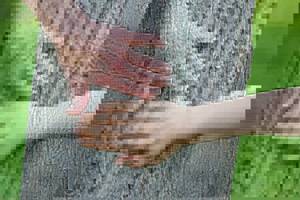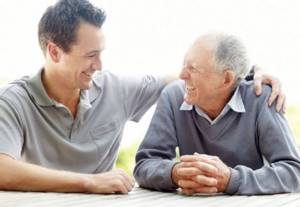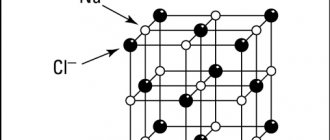Attempts to understand the causes of human aging have been going on for centuries. Various hypotheses and theories put forward have the goal of improving the quality of life and prolonging it. Today, scientists' research into the causes of aging is concentrated in the field of studying cellular structure, and the role of external factors and people's lifestyles are being taken into account less and less. In pursuit of eternal youth, people annually experience various experimental programs in anti-aging clinics, spending thousands of dollars on procedures. However, these techniques do not guarantee immortality - experts simply promise to increase life expectancy. So what are the causes of aging, how does it manifest itself and can it be slowed down?
Causes of aging
The aging process is caused by a failure of the gene program of cell division, which must occur at a certain frequency. Poor lifestyle: poor nutrition, addiction to bad habits, lack of activity, as well as negative external influences provoke accelerated cellular renewal. At the same time, their reserve is quickly depleted, thereby accelerating the manifestations of aging.
Frequent illnesses shorten the life span of cells of all organs - they die, resisting viruses and bacteria. They are also detrimental to the effects of various harmful substances that are components of cigarettes, alcohol, water and poor quality food. Repeated damage to cells leads to their death. This process takes precedence over their birth. That is why a person’s old age comes earlier than expected. According to scientists, living 100–150 years is the norm, provided that various internal and external factors are excluded.
Many scientists believe that aging and death are natural processes and are programmed into our DNA.
Summarizing the results of various scientific studies, we can identify the main reasons why the human body ages:
- Reducing its adaptive capabilities. In other words, the process of cell division proceeds more slowly, the ability of all tissues to self-renew is reduced, leading to their wear and tear.
- Aging at the genetic level. Scientists believe that death is a natural, genetically determined process.
- Stress and phobias. A predisposition to phobias and worries activates the aging process, which manifests itself primarily in a deterioration in appearance. Frequently being in a state of stress leads to the constant production of fear hormones, which have a detrimental effect on internal organs and tissues.
- Exposure to toxins and waste. A polluted environment and non-compliance with the principles of a healthy lifestyle (bad habits, poor diet, inactivity) clog the intestines with toxins, which contributes to slow blood poisoning. Polluted blood loses the ability to regenerate old cells or create new ones.
- Exposure to free radicals. The presence of a certain amount of them is normal for the human body. Being under the control of the immune system, they participate in the fight against viruses and bacteria, activate the required enzymes and hormone production, and release energy. Exposure to excessive amounts of free radicals destroys protein structure and genetic information.
None of the existing theories of aging can explain all the components of this complex process. However, the opinions of most scientists agree: aging is caused by the loss of a large number of cells. That is why it has not yet been possible to find a way that would allow one to remain forever young, since the processes of self-renewal of cells, as well as the prevention of their death, are programmed at the genetic level.
Why do early wrinkles appear?
Age-related skin metamorphoses reflect general changes occurring in the body. Aging cells lose the ability to repair damage to the barrier layer, maintain an optimal level of moisture, and produce a sufficient amount of collagen fibers and elastin.
Exposure to ultraviolet radiation can activate age-related changes in the dermis.
There are natural and early aging. The manifestation of signs of a natural process is laid down at the cellular level. How quickly the changes occur depends on the genes. It is impossible to resist the natural process, but you can slow down its speed by changing your lifestyle, nutrition and using means and methods of protection from the negative influence of the environment.

One of the reasons for skin aging is a decrease in the production of collagen and elastin.
Features of facial anatomy and the habit of frequent facial expressions can lead to the appearance of wrinkles in youth. Wrinkling the forehead, raising and lowering the eyebrows, squinting the eyes and other manipulations contribute to their formation. At the moment of contraction, the facial muscles gather the skin into folds. Distinguished by its elasticity, the skin in youth quickly returns to its previous appearance immediately after muscle relaxation. Over time, due to the loss of its properties by the dermis, small expression wrinkles turn into deep ones.
Video: age-related skin changes
Test for signs of youthful platysma
Stand in front of a mirror and carefully assess the condition of your neck. The following signs indicate her youth:
- a strict jaw line can be traced, from one ear to the other;
- the angle between the chin and the sternocleidomastoid muscle is 90°;
- in the sublingual zone, retraction;
- the angle between the chin and neck is 105-120°.
If you cannot boast of a young and toned neck, then you need to correct this muscle. You are quite capable of tightening up and improving its condition. Get acquainted with the method of correcting platysma - neck gymnastics!
Signs of aging
At a certain point in life, around the age of 30, the manifestations of the aging process begin to become obvious. They can be seen externally and felt internally:
- the skin becomes wrinkled;
- the strength and mobility of bones and joints decreases;
- changes occur in the functioning of all systems.
The main manifestations of aging are failures in the functioning of all important systems, a decrease in adaptive capacity, and the development of pathologies that reduce life expectancy.
Objective signs of age-related changes in the body
Changes associated with old age primarily affect the activity of the heart and blood vessels, as well as the nervous system. Excess cholesterol accumulated in blood vessels with age prevents adequate cellular nutrition of all organs and tissues and the removal of toxins. The healthy functioning of organs is disrupted: the liver does not cope well with purifying the blood, which visually manifests itself in the form of senile pigment on the skin. The filtering function of the kidneys decreases, which leads to an increase in the concentration of intermediate metabolic products in the blood. This begins to slow down metabolic processes and interfere with cellular respiration.
The nervous system reacts sensitively to excess toxins in the body. A decrease in the activity of the processes occurring in it leads to weakening of attention and decreased ability to work. It becomes increasingly difficult for older people to concentrate on different types of activities, emotional instability develops, and sleep is disturbed. Changes occur in the psyche, often characterized by a deterioration in character. Common changes associated with age include myopia. After forty, many people need reading glasses.
Women enter menopause, men experience problems with the genitourinary system. Both may experience a decrease in sex drive.
Physical endurance weakens, temperature changes are poorly tolerated. A weakened blood supply to tissues leads to atrophy and thickening of the ligaments. Problems with joints begin, bones become more fragile due to the fact that bone tissue becomes less dense. Adequate metabolic activity is also reduced, which necessitates improved nutrition to prevent excess body weight.
Video: psychology of older people
Time of manifestation of primary symptoms
Old age does not come suddenly - changes occur gradually, starting after 25 years. The first manifestations of aging can become noticeable at the age of 27–35 and depend on predisposition, lifestyle and external influences. Early aging is typical for people who do not follow the principles of a healthy lifestyle and are exposed to poor ecology.
Manifestations of primary, visual signs of aging appear on the face, body skin, and hair. They are unpleasant to observe, but the easiest to correct and disguise. The visual manifestations of aging begin to concern us earlier than the internal ones, although it is more correct - the other way around. Unfortunately, few people understand the need for an annual inspection of all systems. But identifying the first changes can successfully prevent many age-related pathologies - problems with bones, heart and blood vessels, and others.
Progeria is a very rare genetic pathology, also called premature aging of children. About 400 people live with this diagnosis in the world. At birth, the baby looks normal; signs of aging begin to be noticed between 10 months and 2 years. Pathology, while changing appearance, does not affect the brain and does not affect intelligence.
Progeria: young old people - video
Features of aging of male and female organisms
The arrival of old age and the associated changes in men and women have significant differences. This applies to both physical and psychological spheres. The fact that age-related processes in men and women are not the same is explained by changes in the activity of various hormones.
According to statistics, women on average live several years longer than men, while the inherent signs of aging appear earlier. Nature has endowed women with resilience and endurance during the childbearing period.
Each species on Earth has a certain standard of life expectancy. The death of most living creatures occurs almost immediately after the end of the reproductive phase. In humans, everything happens differently. However, a woman’s aging accelerates when her fertile period ends and menopause occurs.

Manifestations of aging differ between men and women
When the level of the main female hormone, estrogen, decreases, menstruation begins to gradually stop. Their complete disappearance, or the period of menopause, activates the aging process. This is expressed in disruption of the ovaries, changes in the mammary glands, uterus, and bladder. Fat deposits are growing. Negative changes affect the musculoskeletal and cardiac and vascular systems. At this age, women have an increased risk of developing osteoporosis, decreased libido, concerns about blood pressure, irregular heart rhythms, sudden mood changes, headaches, and sweating.
The changes that the male body undergoes are not so pronounced. The result of a gradual decrease in the level of testosterone, the main male hormone, is a decrease in sperm production and a decline in libido. With age, due to a lack of this hormone, the depth of wrinkles increases, and sagging is observed in the face and neck areas. But this process is less active than in women. After 50 years the changes become more pronounced:
- lose muscle strength;
- reflexes slow down;
- hearing and vision deteriorate;
- weakens the immune system;
- erectile dysfunction develops.
Blood plasma proteins are an indicator of the body’s condition
Stanford University neuroscience professor Tony Wyss-Coray said in a study press release that scientists have long known that measuring certain proteins in the blood can provide information about a person's health—for example, the amount of lipoproteins is an indicator of cardiovascular health. However, researchers previously did not know that about a third of all proteins in the blood plasma change markedly with age. Now, thanks to the results obtained, scientists can determine age with an accuracy of up to three years.
By the way, how do you determine a person's age? Share your stories in the comments and with members of our Telegram chat
During the study, experts paid close attention to changes in the level of proteins in the blood. It turns out that each of us has three driving stages of aging that occur at different ages. Researchers do not rule out that changes in protein levels not only characterize, but also cause the phenomenon of aging. The fact is that proteins are the main workers of the body’s constituent cells. When their relative levels undergo significant changes, this means that the body is also changing. By looking at thousands of proteins in the blood plasma, the researchers were able to gain insight into what changes were happening throughout the body.
Stages of aging
Differences in lifestyle and exposure to external factors make the aging process different for each individual. In most cases, its first manifestations occur between the ages of 30 and 40 years. This period is considered to be the initial stage of aging, when physiological changes begin to occur.
30–40 years
The first signs of aging, characteristic of people aged 30–40, include deterioration of the dermis and the appearance of wrinkles. Often at this age some excess weight appears. Reproductive function in women weakens, problems may arise when carrying a child and during childbirth. The level of testosterone in a man's body decreases, and hair loss may occur, leading to baldness.
40–60 years
At the age of 40–60 years, almost all body systems experience disruptions. Metabolism slows down, and, as a result, the risk of gaining extra pounds increases, the appearance and properties of the skin continue to deteriorate, wrinkles deepen, and the immune system is weakened. Most of the changes characteristic of this age interval for both sexes are associated with a decrease in the amount of hormones. After 50 years, the reproductive function of the female body completely stops and menopause occurs. For men, this period is often characterized by the manifestation of problems with the prostate gland.

The aging process is individual for each person and depends on heredity and lifestyle
60–80 years
60–80 years is the period when the manifestations of aging become pronounced. This applies to the skin, which loses its elasticity and firmness, wrinkles become deeper, and the contours of the face and body change. Moisture is lost, collagen levels drop, and muscle dystrophy develops, caused, among other things, by a lack of physical activity. Closer to 70 years of age, due to calcium deficiency, bones become especially fragile, and in women this process is characterized by greater intensity.
Serious changes affect the heart and blood vessels. These include hypertension, blood pressure surges and other problems. Deterioration in hearing, vision, and memory become especially noticeable. Many people's need to stay active is limited by poor health due to health problems.











